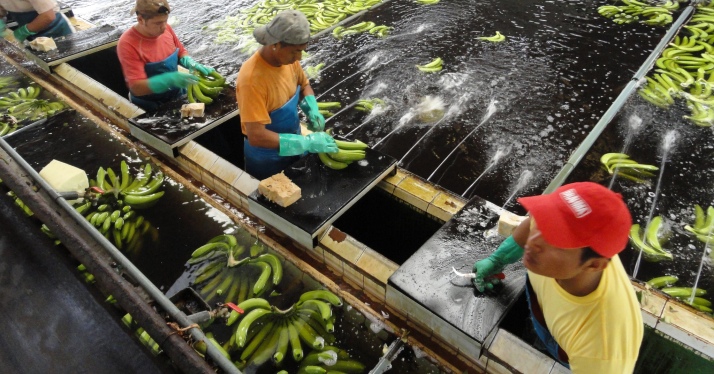
EspañolFrom Wednesday, March 11, Ecuador is to apply a “safeguard” to up to 45 percent of its imports. This means that a surcharge will be added to certain goods that people want to import, something which will bring severe consequences for the economy.
According to Trade Minister Diego Aulestia, the tax is broken down in the following way: 5 percent will be applied to capital goods and non-essential primary goods; 25 percent to tires, ceramics, television and automotive parts; and 45 percent for fully manufactured goods, including TV sets and cars.
The measure was first initiated affecting only Colombia (21 percent of imports) and Peru (7 percent), but now the government of President Rafael Correa has decided to globalize it: something which will only aggravate its effects.
What first raised the alarm is Ecuador’s balance of payments situation due to a serious fall in the price of oil. This situation brought the government to declare these new measures to regulate the general level of imports and restore equilibrium to the balance of trade.
Facing this tough scenario, the Ecuadorian government is taking measures to impose barriers on imports with the objective of avoiding a deficit. However, it’s important to restate that exports and imports are two sides of the same coin. Given that exporting goods is vital to acquiring the means to importing them, the two will, over time, tend to equalize.
The existence of a deficit isn’t necessarily bad, just as the existence of a surplus is no guarantee of a good situation.
Supply generates demand: in each act of trade one person offers a good or a service to receive something in exchange. Whether the exchange is made within or outside of national borders doesn’t change the basic fact that to obtain a good, one must first offer something in exchange. International trade is nothing other than free exchange between people and companies from various countries, not between countries themselves. In the meantime, due to loans and devaluations in multiple currencies, a deficit or surplus can sometimes appear in a nation’s current account balance.
But Correa is worried by the growing deficit in the balance of trade, bringing him to take these measures. However, the existence of a deficit isn’t necessarily bad, just as the existence of a surplus is no guarantee of a good situation. The vice or virtue of both cases depends on why they’ve come about.
Ecuador shows a tendency towards a growing deficit: is this situation favorable or unfavorable? If imports increase, it’s due to the fact that products from abroad are cheaper, bringing consumers to opt to buy foreign goods. If a person can buy the same item in their home country for US$100 and $40 abroad, it’s clear what they’ll go for. However, it will be necessary to offer something in exchange, or this good won’t be able to be imported.
If the government doesn’t intervene, positive and negative fluctuations in the short term tend to balance out. For this reason, curtailing imports ultimately means curtailing exports. Furthermore, the consumer buying their goods from abroad saves $60. This is no small figure, given that if this saved capital is invested correctly in their home country, it will create wealth. Put another way, allowing consumers to buy cheaper imported goods lets them save money, and when this money is put into local economies it creates value and stimulates domestic industries.
Curtailing imports could lead to some short-term benefits, but it will prove damaging in the long run. It will also hurt all the country’s consumers.
One other important point must be mentioned. Generally, governments of a populist hue are increasingly worried about dollars leaving their country, but they fail to show the same concern as to why dollars aren’t entering. This is no coincidence, given that in general, investment comes to countries where institutions are respected, and Ecuador simply doesn’t come across well in this regard.
Taking a look at the World Bank’s latest Institutional Quality Ranking, we can see that Ecuador takes position 143 out of 192 countries evaluated. The situation looks even worse when placed in a regional context, where Ecuador finds itself fourth from last, coming ahead of only Venezuela, Cuba, and Haiti. Ecuador is hardly a country which inspires confidence to attract dollars.
Curtailing imports could lead to some short-term benefits, but it will prove damaging in the long run. It will also hurt all the country’s consumers, forcing them to buy more expensive and worse-quality goods. If Ecuador really wants to fix its trade problem, it should open itself up to the market and clean up its institutions.
 Versión Español
Versión Español












